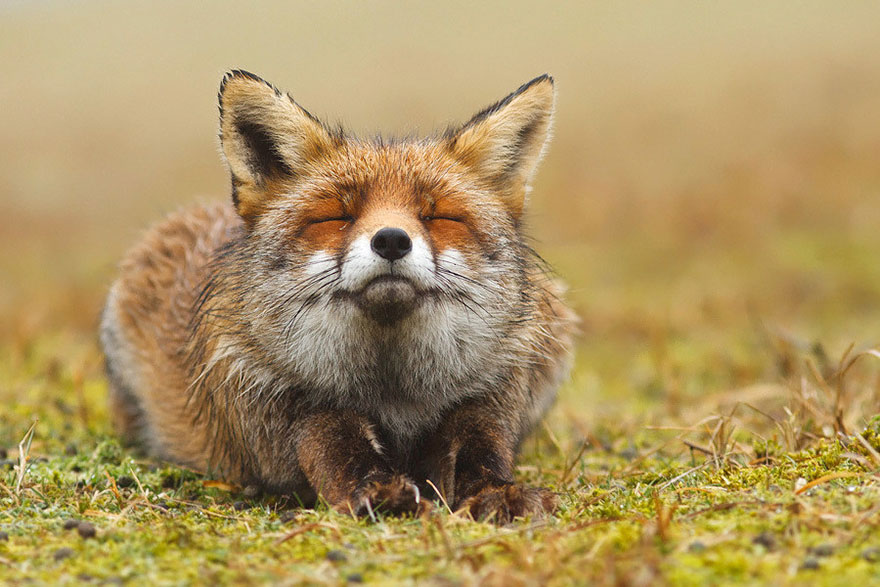We know how much you guys love cute foxes, so we thought we’d introduce you to some of the most beautiful and striking fox species out there so you’d know which types of foxes are your favorite!
The red fox (Vulpes vulpes) is what usually comes to mind when you hear the word “fox,” which makes sense since it can be found all around the Northern hemisphere. However, this diverse and adaptive genus has species across the globe, all of which are specially adapted to thrive in their environments. Take for example the Fennec fox, that’s accustomed to living in the Sahara desert – that’s nothing like the cool forests that we are used to seeing a fox in! And, with some help from selective breeding, many new fox breeds look nothing short of majestical.
If you love foxes and think they look better in the wild than they do around someone’s neck, then you’ll definitely love seeing all of these fox pictures, depicting them in their natural environment.
P.S.: There are even some pictures of baby foxes in this list – nothing beats that in cuteness!
Fennec Fox
Image credits: Francisco Mingorance
Fennec foxes, native to North Africa and the Sahara desert, are distinguished by their large ears, which serve to dissipate their body heat. These ears give them such good hearing that they can even hear their prey moving under the sand. Their cream-colored fur helps them deflect heat during the day and stay warm at night. (Image credits: animalgalleries.org)
Red Fox
Image credits: Roeselien Raimond
Image credits: Kai Fagerström
Image credits: Wenda Atkin
The red fox is the largest, most wide-spread and, as a result, the most diverse species of all the foxes. They can be found throughout the Northern Hemisphere and in Australia as well. They are very agile hunters and have been known to jump over 2m tall fences. (Image credits: Roeselien Raimond)
Marble Fox
Image credits: unknown
Image credits: unknown
The “arctic marble fox,” also a member of the red fox species, is not a naturally occurring coloration – it was bred for its fur by humans. (Image credits: Ewald Mario)
Gray Fox
(Image credits: Variegated Vibes)
The gray fox, which lives throughout North America, is distinguished by its “salt-and-pepper” upper coat and black-tipped tail. This fox is one of the only canids capable of climbing trees. (Image credits: John Pane)
Silver Fox
Image credits: Shelley Evans
The silver fox is actually the same species as the red fox – they simply have different pigmentation variations. The silver fox was, at on time, one of the most valuable fur foxes that could be found. They are still bred and farmed for their fur. (Image credits: Matt Knoth)
Arctic Fox
Image credits: Daniel Parent
Image credits: imgur.com
Image credits: Einar Gudmann
Image credits: William Doran
The arctic fox can be found throughout the Arctic Circle. Their thick fur keeps them from shivering in temperatures as low as -70 degrees Celsius (-94 Fahrenheit). These foxes have relatively short legs and snouts, which helps keep their surface area down and retain heat. (Image credits: Cecilie Sonsteby)
Cross Fox
Image credits: Ben Andrew
The cross fox is yet another color variant of the red fox. It is most common in North America. (Image credits: Ben Andrew)
Explore more of these tags
100% agree. What's even worse than hunters are trappers and those who torture and kill these beautiful animals on fur "farms".
Load More Replies...All foxes are beautiful... Except the dead ones, ugly people wears on their coats!
.. can't understand why hunting still goes on..!?!?!;'-/
Load More Replies...100% agree. What's even worse than hunters are trappers and those who torture and kill these beautiful animals on fur "farms".
Load More Replies...All foxes are beautiful... Except the dead ones, ugly people wears on their coats!
.. can't understand why hunting still goes on..!?!?!;'-/
Load More Replies...
 Dark Mode
Dark Mode 

 No fees, cancel anytime
No fees, cancel anytime 






































































260
237